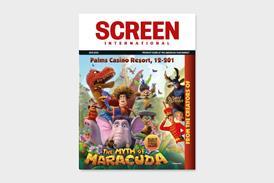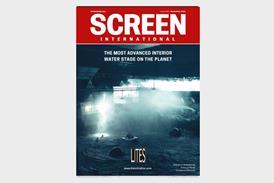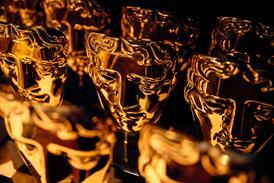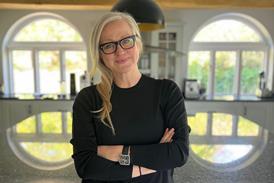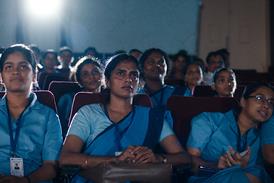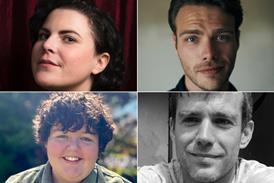’A Yak In The Classroom’ director takes notes from Robert Altman for this Bhutan-set political satire

Dir: Pawo Choyning Dorji. Bhutan. 2023. 107mins
Relaxed yet perceptive, The Monk And The Gun is a freewheeling convergence of modernity and tradition, the urban and the rural. Taking notes from Robert Altman, writer-director Pawo Choyning Dorji’s film takes place in 2006, and follows several disparate characters in a small Bhutanese village who separately navigate the oncoming changes—internet, cellphones, and the country’s first Democratic election—sweeping the nation.
A film brimming with ironic lines
Like Dorji’s previous film, the endearing Academy Award nominated Lunana: A Yak in the Classroom, this has already been selected as Bhutan’s submission for the Oscars’ Best International Film category (the third such submission in the tiny country’s history). Delightfully blending political satire and the Western genre, with a mostly unknown cast of charming untrained actors, Dorji’s crowd-pleasing film should prove approachable enough to warm both critics and adventurous audiences.
It all begins when an elderly Lama (played by Ura village’s real-life Lama Kelsang Choejey) breaks his meditation to send a young monk (Tandin Wangchuk) in search of guns after hearing of Bhutan’s coming election. It’s a difficult task because almost no one in the country has ever seen one, except for an elderly villager who owns an American Civil War rifle purported to have killed many Tibetan soldiers over 100 years ago. At first, American gun collector Ron (Harry Einhorn), who is being guided by Benji (Tandin Sonam) is promised the antique, but the villager breaks his deal to give the rifle to the monk.
Similar to Anthony Mann’s Winchester 73, the firearm’s physical movement from person to person propels the narrative. The rifle comes to represent the Westernisation of this rural country, whose lush, verdant rolling hills, captured in awe-inspiring grandeur by cinematographer Jigme Tenzing, are unblemished by greed, jealousy, or rivalry. Dorji uses the overt symbolism of the gun to show the encroaching transformation of Bhutan. When the monk steps into a local store, he orders black water (his phrase for Coca-Cola) and stays with the other villagers, who are religiously huddled around a new television, watching a trailer for Quantum Of Solace (a film with notable gunplay).
But the most earth-shattering event is the approaching election, instigated by the King’s decision to abdicate. For the first time in the country’s history, people are being taught to vote. Like the gun and the televisions, the Western construct brings outsiders and vices. A father (Choeying Jatsho), for instance, becomes enemies with his mother-in-law because she supports another candidate. His daughter (Yuphel Lhendup Selden) is picked on at school because of his political allegiance. He even comes to envy his neighbour because they own a bigger television. There is a wonderful scene, shot by Tenzing and stitched by editor Hsiao-Yun Ku, that demonstrates the country’s internal battle; the father stares out of the window flanked on one shoulder by a traditional picture of the Lama and over the other by the poltical candidate he supports.
Through its many characters, Dorji’s intelligent script ponders whether democracy is necessary for Bhutan. It is telling that none of the villagers are demanding the right to vote. That power is given to them, seemingly on a whim, by the King. In the mock election scene – the word “mock” taking on both meanings, inauthentic and a point of derision – citizens are instructed by officials to vote for fake colour-coded candidates. Yellow wins by a nearly statistically impossible landslide. One official asks how that could happen; the other responds that yellow is the colour of the King.
It is one of the sly, crushing punchlines in a film brimming with ironic lines. When one of the election officials finally meets the American, for example, he’s excited to talk to a person from “The land of Lincoln and JFK” (two presidents who were shot). At another point, the monk asks if an election is a new disease afflicting pigs.
Like Robert Altman’s Nashville, Dorji keeps these characters apart until the very end. The gun unites them for a ceremony held by the elderly Lama, scored, discerningly, by composer Frédéric Alvarez’s use of local folk music. Though the film is a critique of the West’s approaching influence in Bhutan, it is not a total repudiation of modernity. Instead, like its title, The Monk and the Gun is about how new beliefs need to be married to familiar rituals if a community hopes to survive.
Production companies: Dangphu Dingphu: A 3 Pigs Production, Films Boutique, Journey to the East Films, Tomson Films, Closer Media, Animandala, N8 Studios, Wooden Trailer Productions
International sales: Films Boutique, [email protected]
Producers: Jean-Christophe Simon, Hsu Feng, Stephanie Lai, Pawo Choyning Dorji
Screenplay: Pawo Choyning Dorji
Cinematography: Jigme Tenzing
Production design: Chungdra Gyeltshen
Editing: Hsiao-Yun Ku
Music: Frédéric Alvarez
Main cast: Tandin Wangchuk, Deki Lhamo, Pema Zangmo Sherpa, Tandin Sonam, Harry Einhorn, Choeying Jatsho, Tandin Phubz, Yuphel Lhendup Selden, Kelsang Choejay


